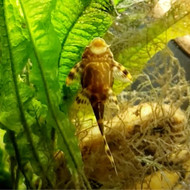10 Best Looking and Interesting Pleco Catfish for Your Aquarium.
Posted by Artur Wlazlo on 11 Jan 2023
Catfishes are quite literally the most diverse group of fish. There are thousands of different species – many still undescribed – that live principally in tropical freshwaters of South America. But, catfishes, are found in every continent (except the poles) and in both freshwater and saltwater. In this blog, we focus on freshwater catfishes from the Loricariids family or the sucker-mouthed plecos.
Plecos have very unique anatomy. They exhibit sucker mouths which they can use to attach themselves to solid objects, aquarium plants, and aquarium glass or decorations. These mouths are lined with small teeth which they use to scrape algae or wood. Many have also armored bodies, providing them, with enhanced protection from predators. They sport stout pectoral and dorsal fin spines. They use them to protect themselves or dissuade potential predators from attacking. They can also spread and “lock” them in place, wedging themselves in crevices and caves. Hobbyists should be aware that handling these fish should be done with care as these “spines” can inflict some painful stabs and cuts.
Care for all plecos, especially those of small to medium size, is similar. Most of them are omnivorous and some are herbivorous specialists and will readily graze on algae in the aquarium. Oftentimes, however, the amount of algae will not be enough to meet their dietary needs and hobbyists should provide commercially prepared food such as pellets, flakes, or especially formulated pleco wafers. They can also be fed blanched lettuce, spinach, beans, and peas. Many plecos feed on wood as well and adding driftwood will not only spruce up décor in your aquarium but will also provide food for them.
Plecos are bottom-dwelling fish and they will appreciate some hiding places. Furnishing their aquarium with rocks, driftwood, coconut caves, and other decorations is recommended. Contrary to popular belief, most plecos will not harm healthy aquarium plants and are well-suited for planted aquariums.
Below is our list of the 10 best-looking and most interesting plecos for your aquarium:
1. ZEBRA PLECO L46
Zebra Pleco, also known by its scientific name Zebra Peckoltia, belongs to the family Loricariidae. This beautiful pleco lives upriver of the Altamira on the Xingu River in Brazil. This is one of the most beautiful plecos available in the hobby. The Zebra Pleco's body is spectacularly patterned in black and white (as its name suggests). It is considered by many, rightfully so, as the crown jewel of plecos in the hobby.
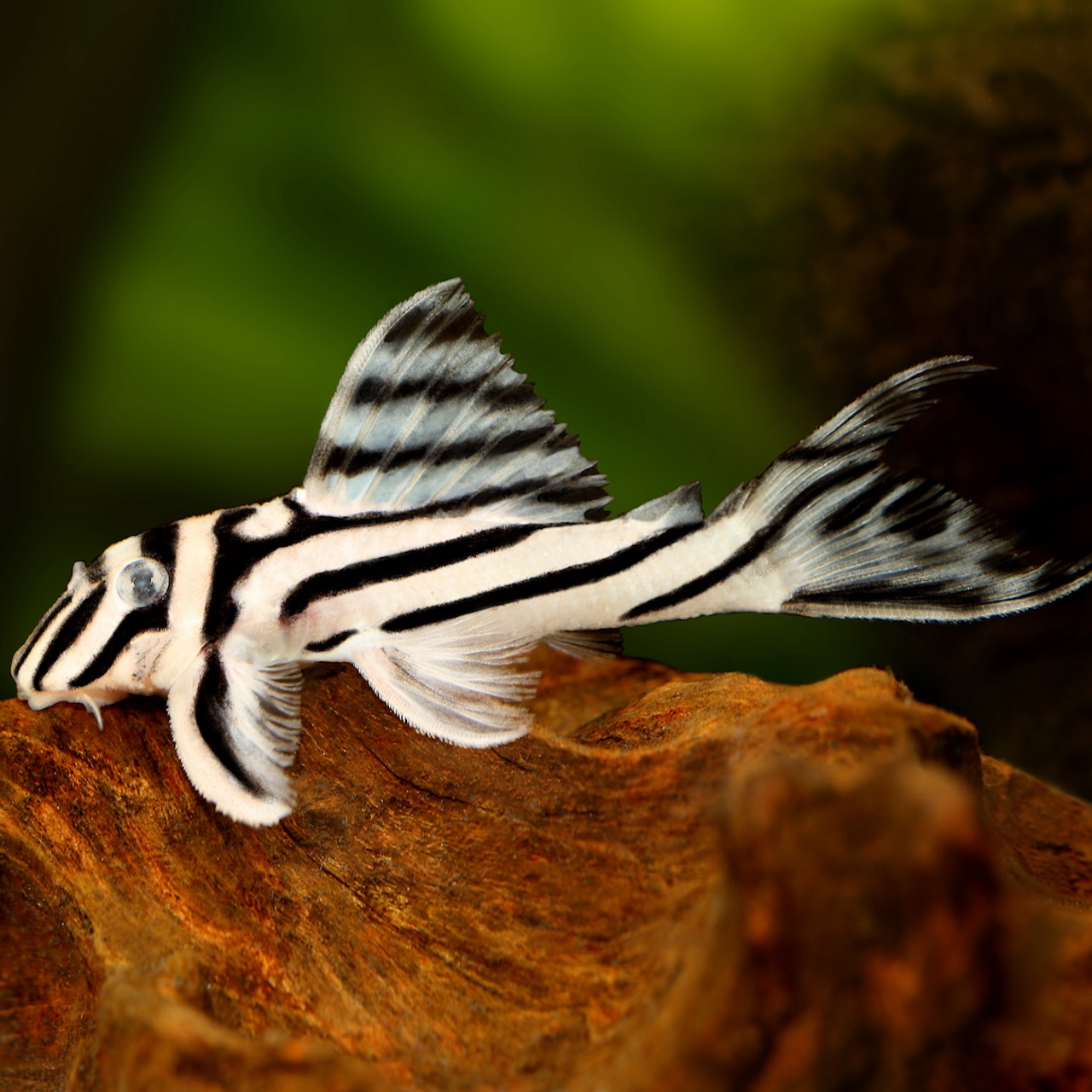
Zebra Pleco is peaceful and suitable to inhabit aquariums with most fish. This fish is herbivorous but also eats other types of foods. It will accept a wide range of sinking foods available online and in aquarium retail stores, including pellets, flakes, or wafers.
These medium-sized plecos do not require large aquariums. They will appreciate well-planted aquariums with lots of hiding places provided by coconut caves, driftwood, or rocks. Water chemistry is not critical, but the fish generally prefers softish water, and the fish will adapt to a wide range of water conditions.
2. LEOPARD FROG PLECO L134
Leopard Pleco (Peckolia Compta), also known as Imperial Tiger Pleco, has very attractive coloration and pattern. It is a suckermouth catfish that belongs to the Pecoltia genius of the Loricariidae family. It is native to the Amazon River. As its name suggests, Leopard Plecos sport a leopard-like pattern on their body with a mix of black and yellow stripes throughout the length of their body. Young juveniles start with much more elongated lines which turn into more irregular patterns as they attain maturity.
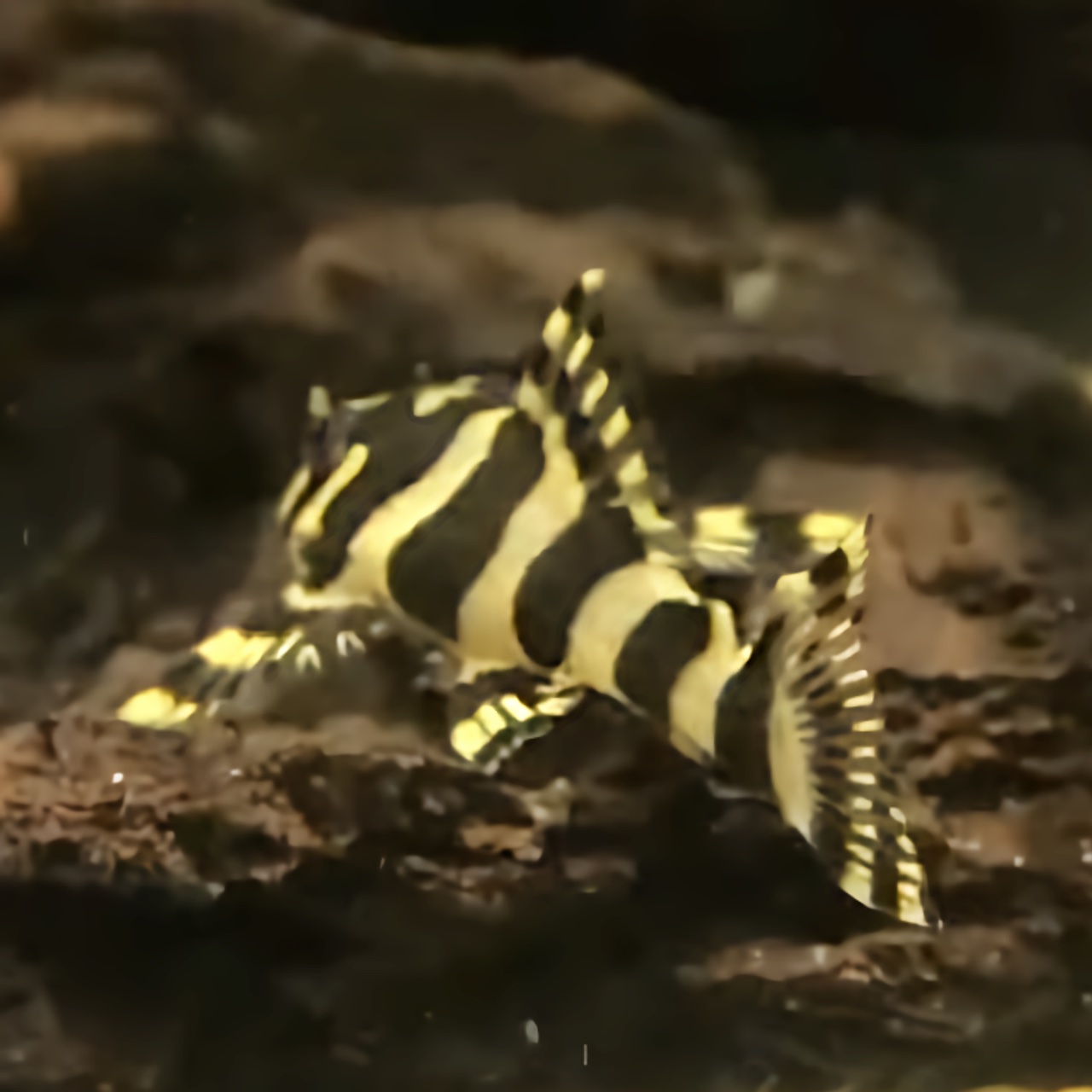
This fish will thrive in most aquariums. They like fully established and cycled aquariums with clean water, some flow, and stable water parameters. Their aquariums should provide lots of hiding places. Driftwood, rocks, aquatic plants, and other aquarium decorations can be used to furnish their habitat. They will cohabitate peacefully with other fish.
This fish does not require a large aquarium and a well-maintained 20-gallon tank would be suitable. Leopard Plecos are omnivores and need a varied diet, including vegetation and protein. We recommend feeding good-quality fish food, including wafers, pellets, or flakes.
3. GOLD NUGGET PLECO L018
Gold Nugget Pleco L018, also known by its scientific name as Baryancistrus xanthellus, is a catfish widely found in the Rio Xingu in the Amazon, Brazil. This fish is very beautiful with stunning coloration which includes contrasting gold/yellow spots on the body and yellow tips on the dorsal and caudal fins.
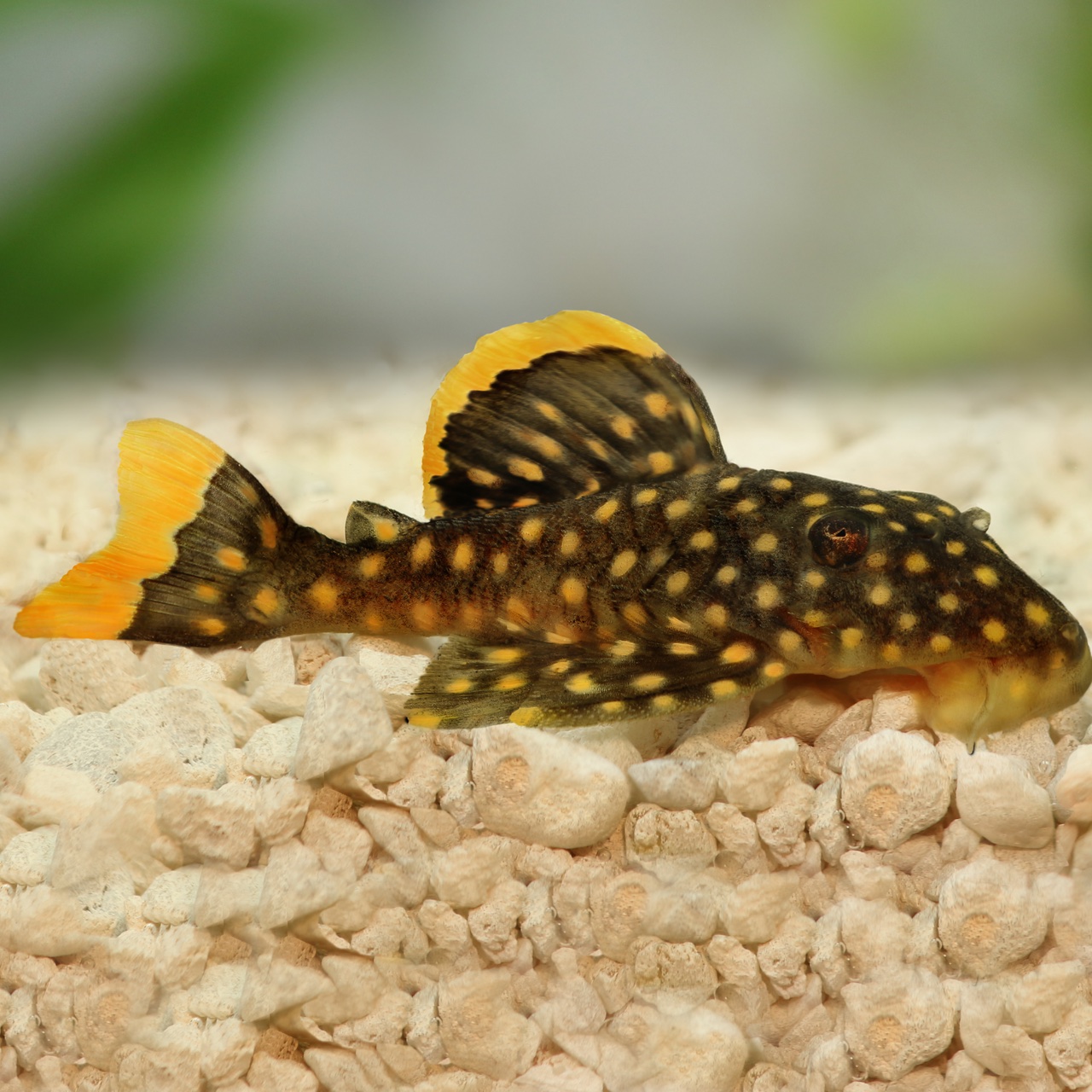
This fish is peaceful towards other tankmates, but males may be more territorial toward other male plecos. This fish will eat just about anything, including bloodworms, algae, and other plant-like material but, generally, will not harm healthy aquarium plants. It is not a finicky eater and will readily accept commercially prepared flakes or algae wafers. You can supplement its diet with slices of potatoes, cucumber, zucchini, or lettuce leaves by placing them on the bottom of the aquarium.
As they are medium-sized plecos, Gold Nugget Plecos do not require large aquariums but will appreciate shelter/hiding places such as caves, driftwood, or rocks. Water chemistry is also not critical and the fish will adapt to a wide range of water conditions. However, Gold Nugget Pleco should be kept in clean, well-filtered, and oxygenated water. A good canister filter and regular water changes will take care of these requirements. Sexing juveniles is not possible but adult females have narrower and more rounded foreheads than males.
4. BLUE PHANTOM PLECO L128
Blue Phantom Pleco L128, Hemiancistrus sp, is a brilliantly colored suckermouth fish. It has deep cobalt blue-colored body sprinkled with a distinctive pattern of white dots.
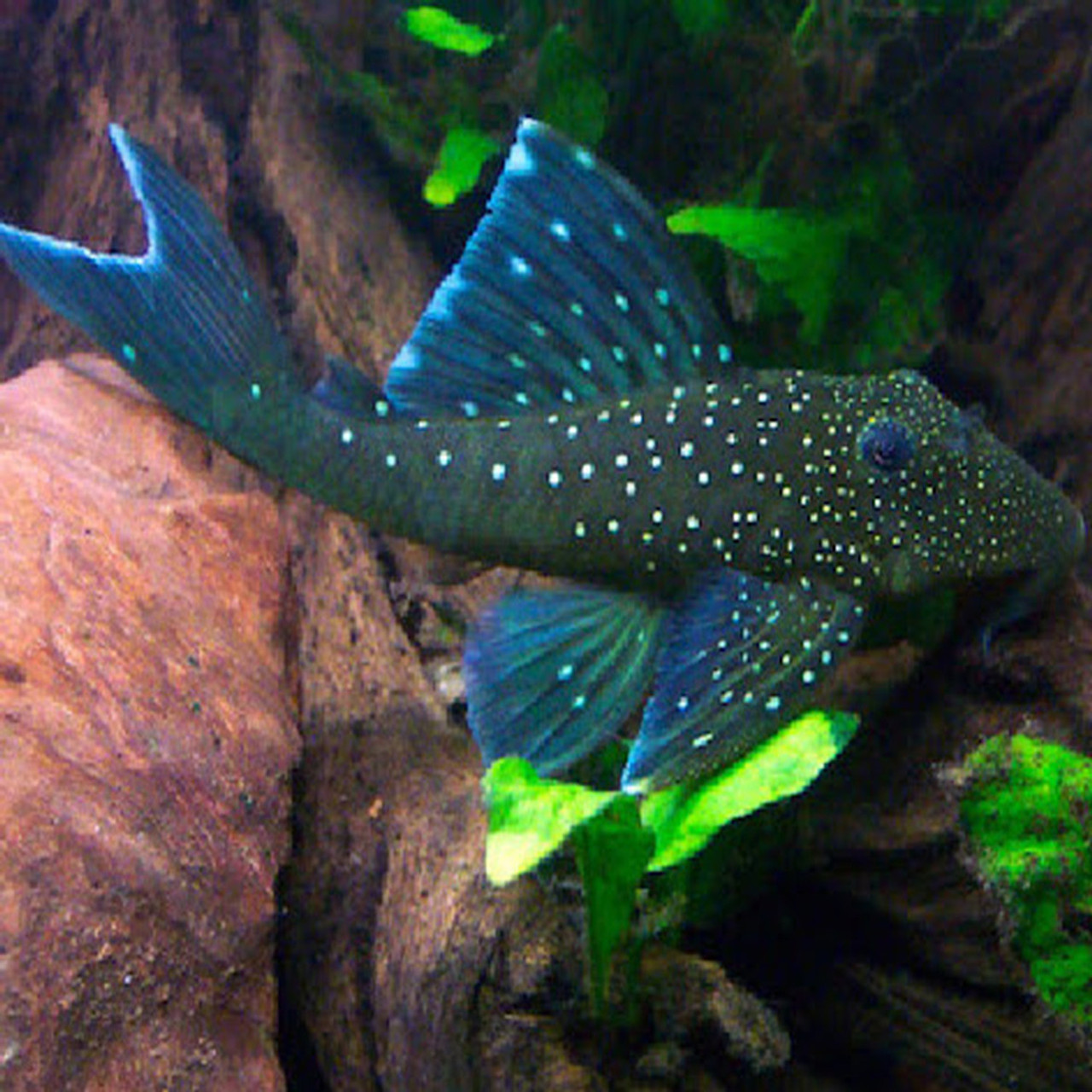
Blue Phantom Pleco is native to the Rio Orinoco River in Venezuela. It is peaceful towards other tankmates, but males may be more territorial or aggressive toward other males. Sexing this fish is difficult but males have larger heads and odontodes on the cheeks and first pectoral fin. This fish is omnivorous and easy to feed. It will enjoy both vegetarian and meat-based diets. It will eat algae and any foods it finds on the bottom of the aquarium. It will readily accept commercially prepared flakes or algae wafers. Its diet can be supplemented with slices of potatoes, cucumber, zucchini, or lettuce.
Blue Phantom can be kept in medium-sized aquariums. Their aquarium should be aquascaped with driftwood or rocks as they need some hiding places to feel safe and secure. Water chemistry is not critical and the fish will adapt to a wide range of water conditions but they should be kept stable. This fish is also good for a community aquarium.
5. CLOWN PLECO
Clown Pleco, also known by its scientific name as Panaque Maccus, is a very popular catfish because of its beautiful coloration and pattern. This bottom feeder is found in Venezuela and Colombia. This pleco's body is largely dark brown to black with a contrasting pattern of light/white stripes on its body.
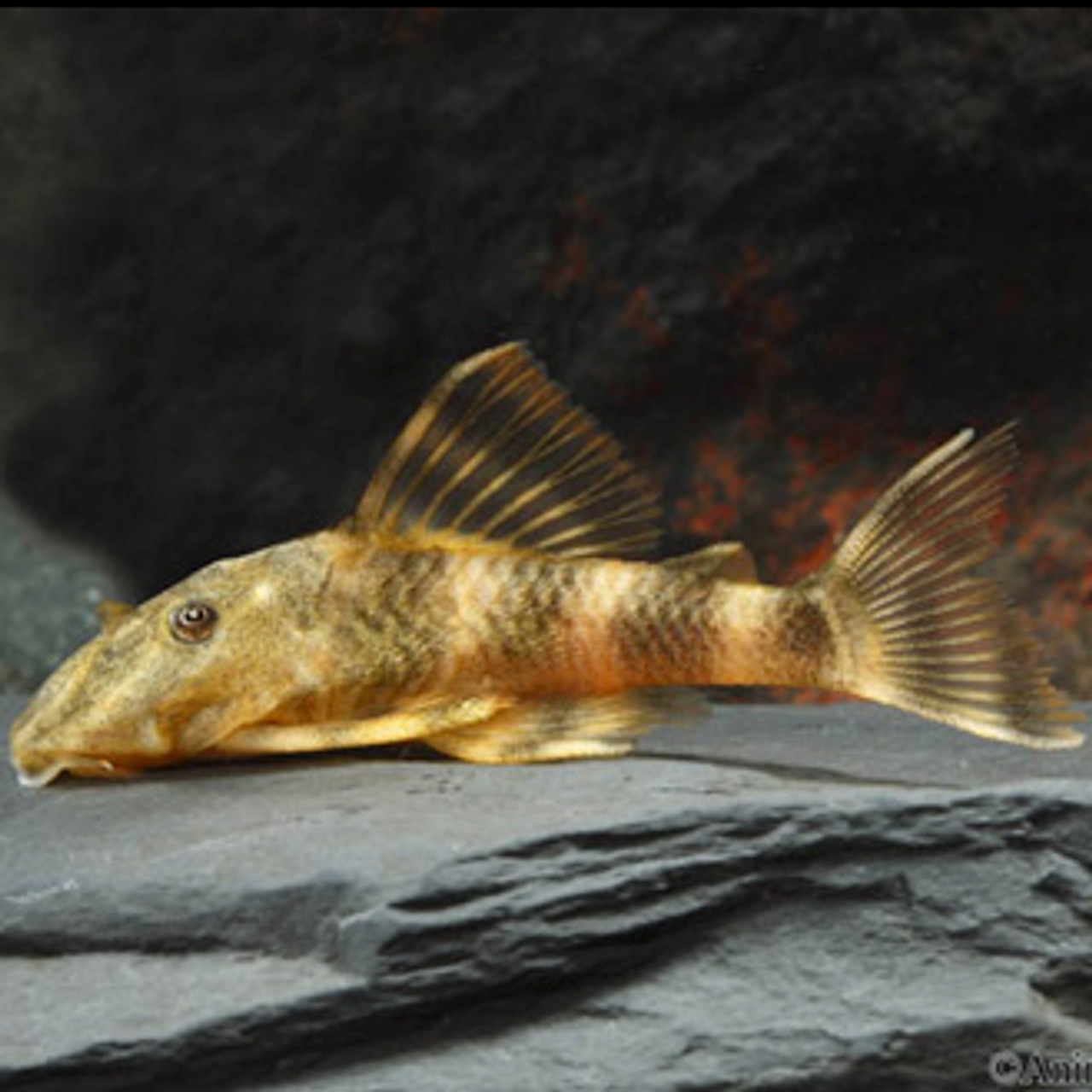
Males may be more territorial or aggressive toward other males but Clown Pleco is peaceful towards other tankmates. This fish eats wood and other foods and plant-like material. Clown Pleco likes to chew on something and they will appreciate driftwood, squash, cucumber, and other vegetables if made available to them. Alternatively, they should be fed high-quality commercially prepared fish foods like pellets, flakes, or wafers.
Clown Plecos will do well in small aquariums. Because of their appetite for would, their aquarium should be furnished with driftwood. Adding rocks and other decorations where Clown Pleco can hide is also recommended. Given stable water parameters, Clown Pleco will adapt to a wide range of water conditions.
6. RED LIZARD WHIPTAIL
Red Lizard Whiptail is a prehistoric-looking catfish. It has a long and slender body displaying red hues and colors and a high dorsal fin. This fish is sure to provide something unique to your aquarium.
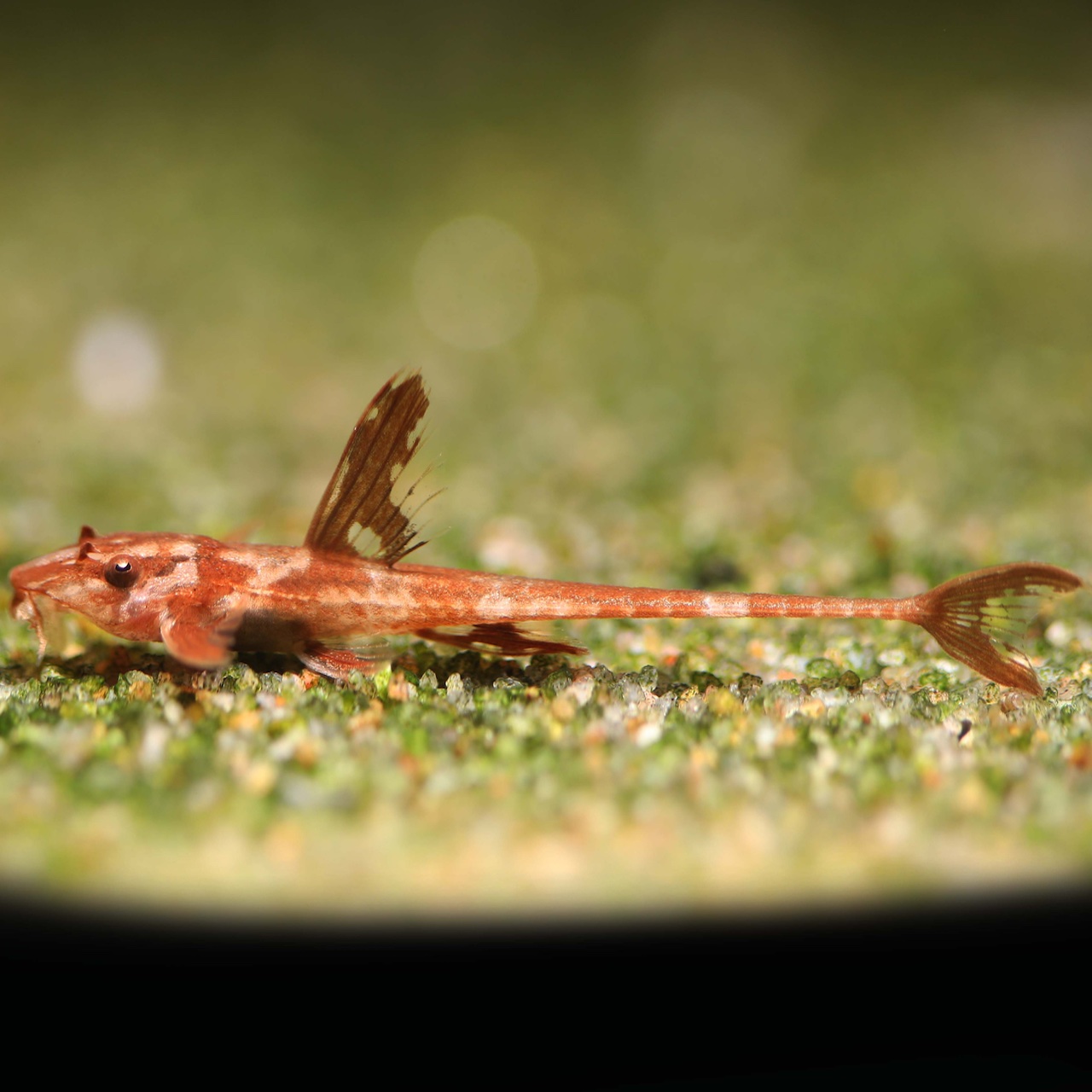
The Red Lizard suckermouth catfish belongs to the Loricariidae family and originates from South America. It is a hardy fish that is most active during the evening hours. Once made comfortable in the aquarium and it learns the feeding schedule, the fish should come out regularly during the feeding times. It can often be spotted, resting on the leaves of plants and driftwood branches.
Red Lizard Whiptail will feel best in aquariums with live aquarium plants. Providing additional hiding places such as driftwood, rocks, and coconut caves is recommended to increase the fish's comfort. The fish will accept a wide range of foods, including flakes, small pellets, and algae wafers. It can also be fed with fresh vegetables like shelled peas, spinach, zucchini, and cucumber.
Red Lizard Whiptail can be kept with many other peaceful fishes, including tetras, plecos, cories, rasboras, and many other community fish.
7. EMPEROR PLECO L204
Emperor Pleco, also known as Flash Emperor Pleco or by its scientific name Panaqolus Albivermis, is a strikingly beautiful catfish. It has a dark brown to black body with thin and contrasting white vertical lines snaking their way from its head to tail. As the fish grows, it may also develop white spots on its body.
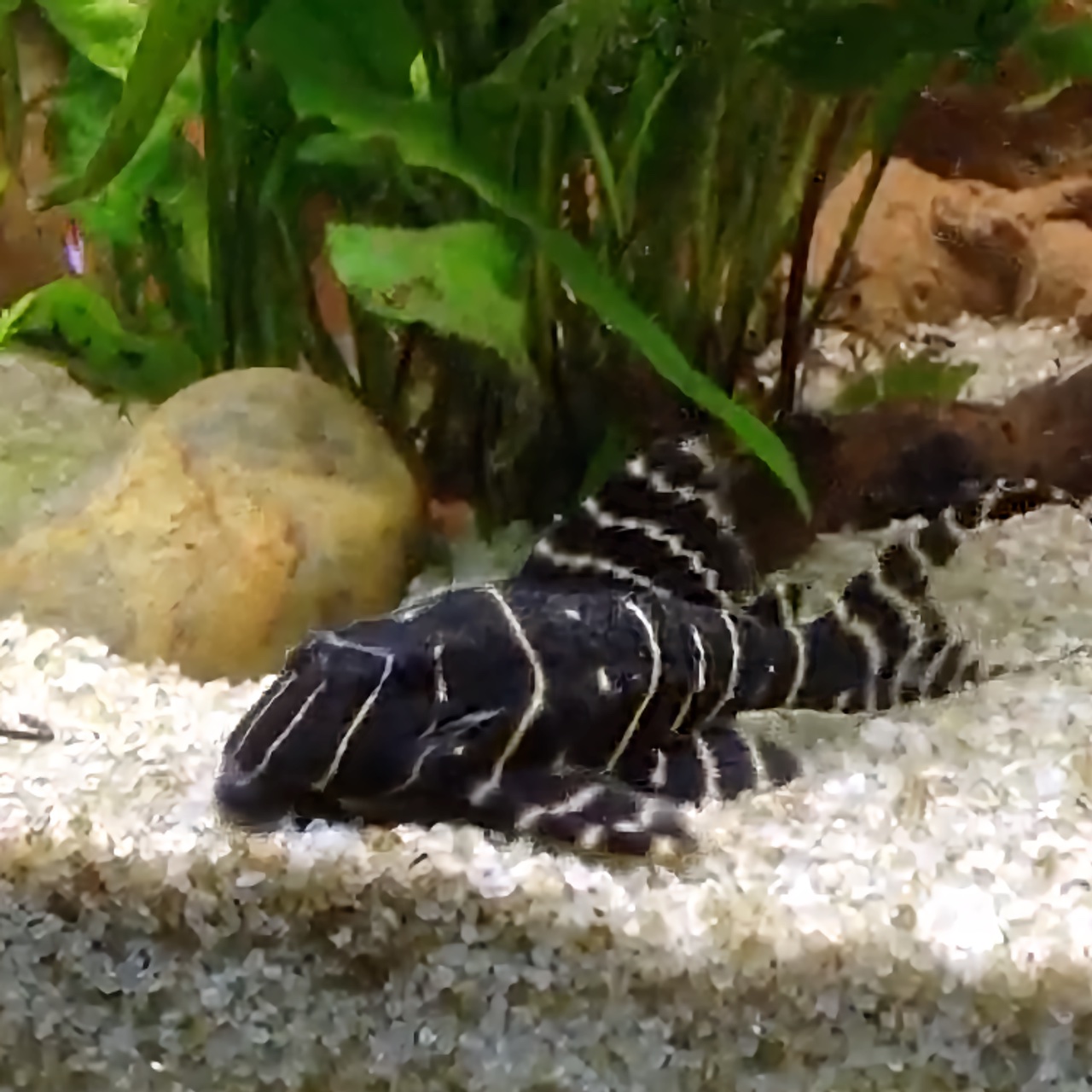
Emperor Pleco is found in Peru and specifically in the Ucayali and Maron rivers and their tributaries. It is an undemanding fish and will thrive in a variety of tank conditions. This pleco is ideally suited for active community tanks.
Emperor Pleco should be fed a varied diet, including high-quality wafers, flakes, and pellets. The fish will appreciate hiding places provided by rocks, driftwood, and other tank decorations. It will also thrive in planted aquariums, contrasting beautifully against the green colors of the aquatic plants.
8. FALSE ZEBRA PLECO L397
False Zebra Pleco is known by many different common names, including Lujans Pleco, Mottled False Zebra Pleco, and Scribbled Pleco. It is a beautiful and attractively patterned pleco with irregularly shaped white striping on a dark body.
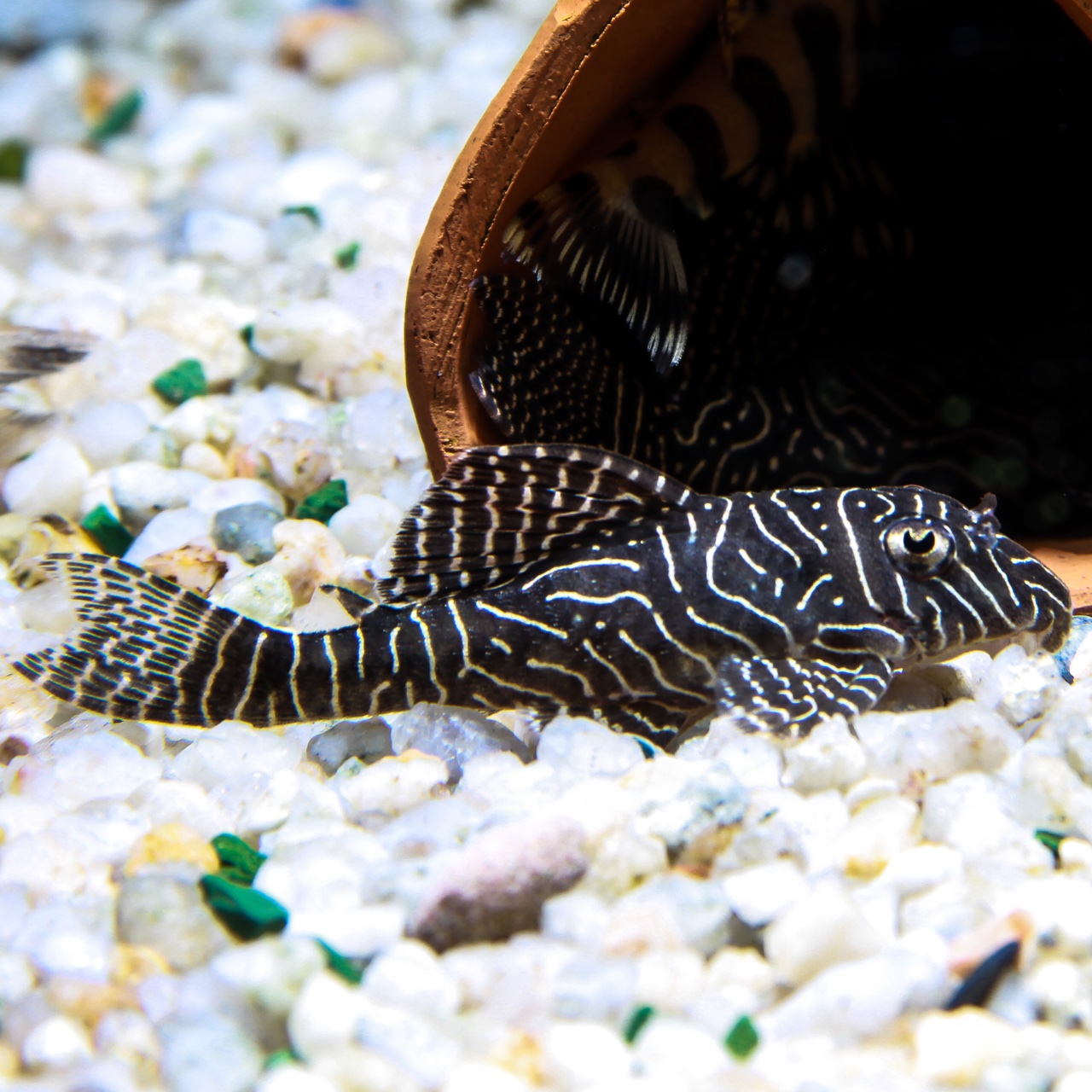
False Zebra Pleco, Panaqolus sp. (L397), is a species of fish belonging to the Loricariidae family. It is found in the Orinoco and Meta Rivers in Colombia. This medium-size pleco tolerates a wide range of water conditions, is peaceful toward other tankmates, and accepts a variety of fish foods. For these reasons, False Zebra Pleco is an ideal fish for community tanks or those housing varieties of fish.
False Zebra Pleco should be fed a varied diet, including vegetarian and meat/protein based. High-quality fish food for bottom feeders, including pellets, wafers, and/or occasionally blood worms will meet this pleco's dietary needs. An ideal aquarium should also have driftwood, rocks, and other decorations allowing the fish both to feed on it and find suitable hiding places.
9. RED BRISTLENOSE PLECO
Red Bristlenose Pleco is a color variant of a bushynose pleco. It belongs to the family Loricariide. It is widely found in tropical South America. This pleco is similar in appearance to an albino bushy nose pleco but its coloration is more attractive. Its body color ranges from light yellow to slightly reddish.
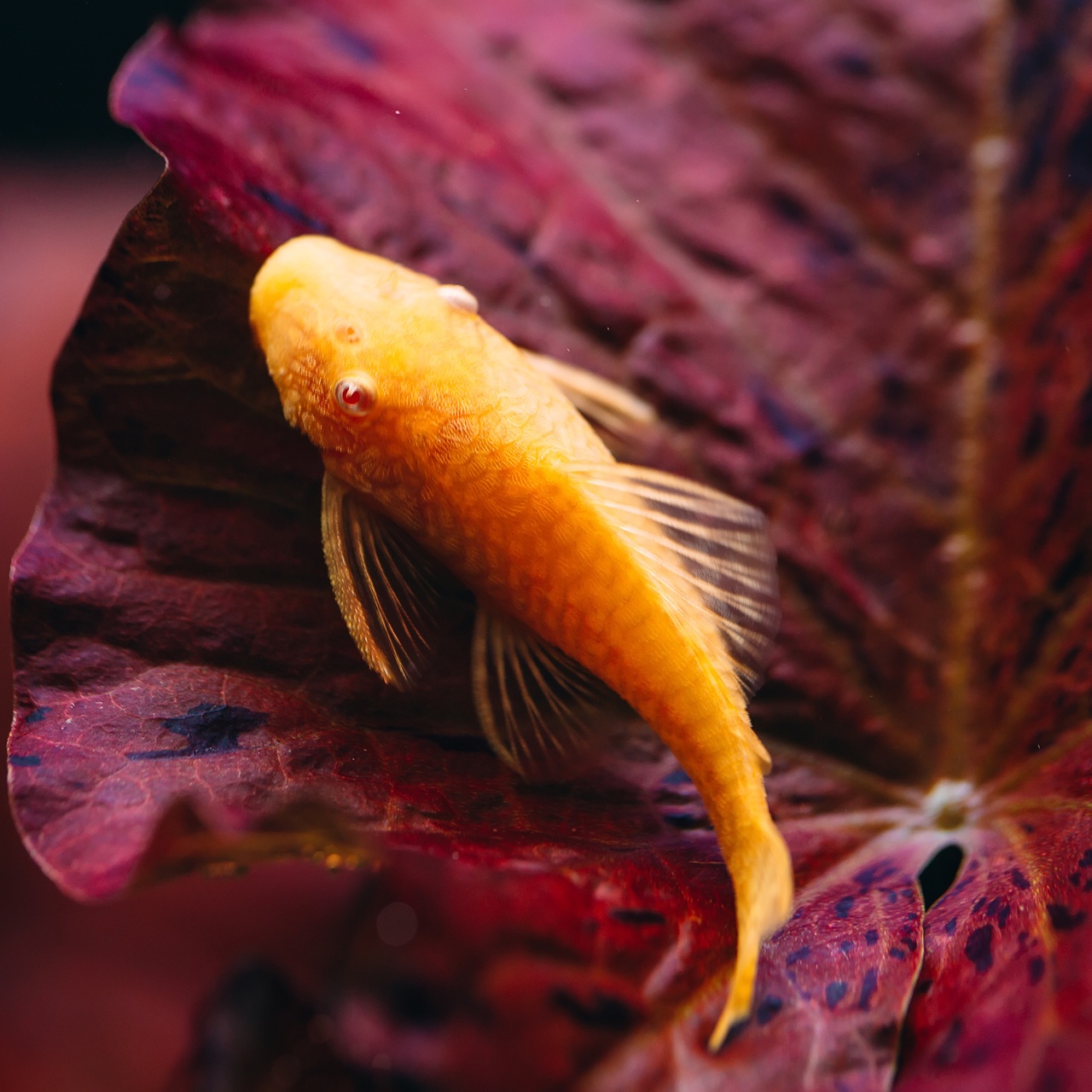
It is peaceful towards other tankmates, but males may be more territorial or aggressive toward other male plecos. This fish is not a picky eater and will eat just about everything, including frozen foods like bloodworms, algae, and other plant-like material but is not known to harm healthy aquarium plants. This pleco will readily accept commercially prepared flakes or algae wafers. You can supplement its diet with other vegetable matter such as slices of potatoes, cucumber, zucchini, or lettuce leaves by placing them on the bottom of the aquarium.
Bushynose plecos are suited for small and medium-sized aquariums. A lot of hiding places constructed from driftwood or rocks should be built in their aquariums. Water chemistry is not important and the fish will adapt to a wide range of water conditions. Sexing is fairly easy as the males develop bristlelike projections on the head. When breeding, the female will lay eggs in a cave, between roots or bogwood, and they, as well as the fry, are guarded by the male.
10. MEDUSA BUSHYNOSE PLECO L034
Medusa Bushynose Pleco L034 is a truly oddly shaped pleco. Similar to Bristlenose Plecos, this pleco also has protruding tentacles growing around its mouth and on top of its head. Medusa pleco's body, however, is more flattened, and its head appears unusually large for its body.
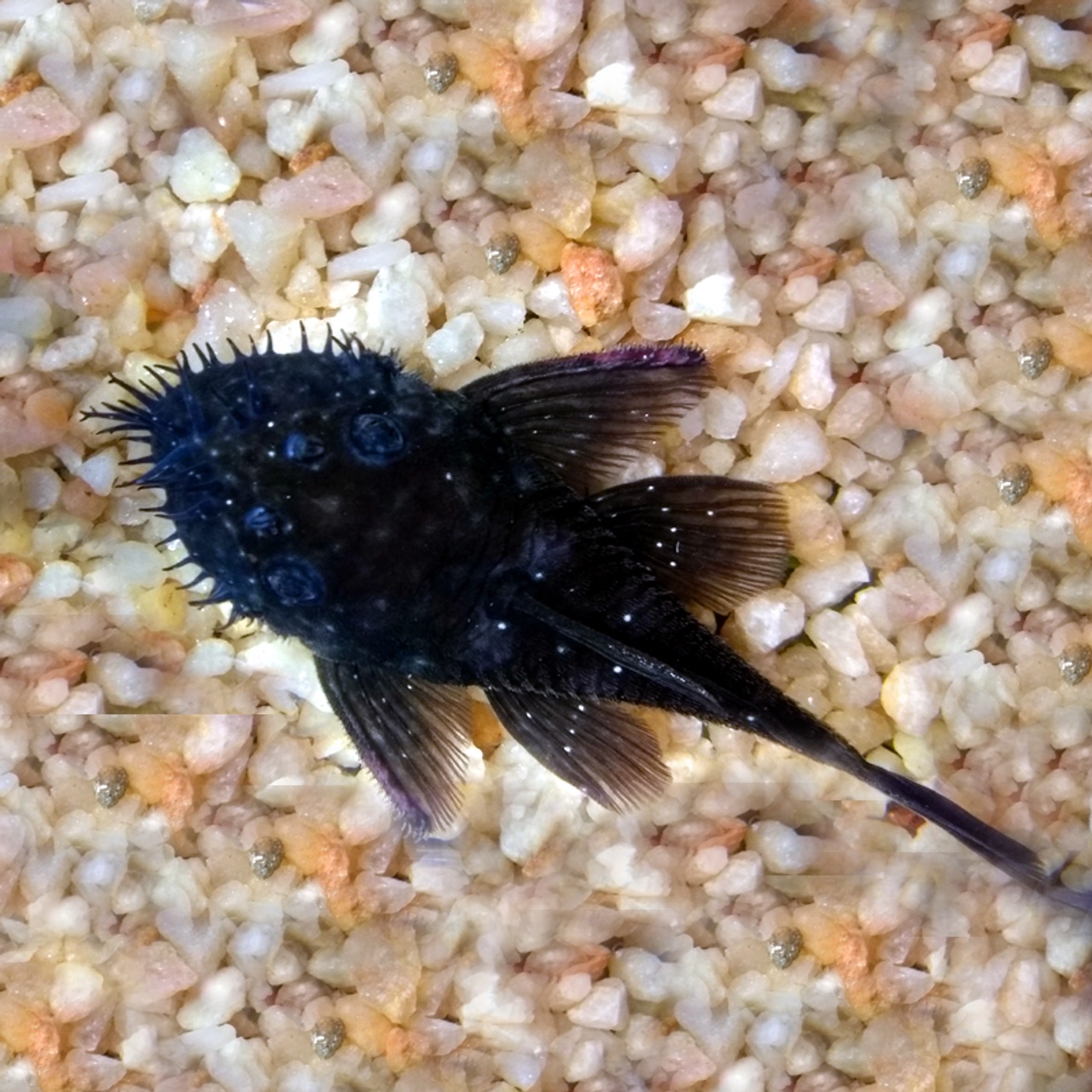
Medusa Pleco originates in the Xingu River, Brazil. It likes clean water with good flow. It is peaceful towards other tankmates and can be kept in community fish aquariums. This fish will eat both vegetarian and meaty foods, including algae and blood worms. It is not a finicky eater and will also accept commercially prepared flakes or algae wafers.
Aquariums housing Medusa Pleco should be aquascaped with hiding places such as caves or crevices provided by driftwood, or rocks. The fish will adapt to varied water conditions.

